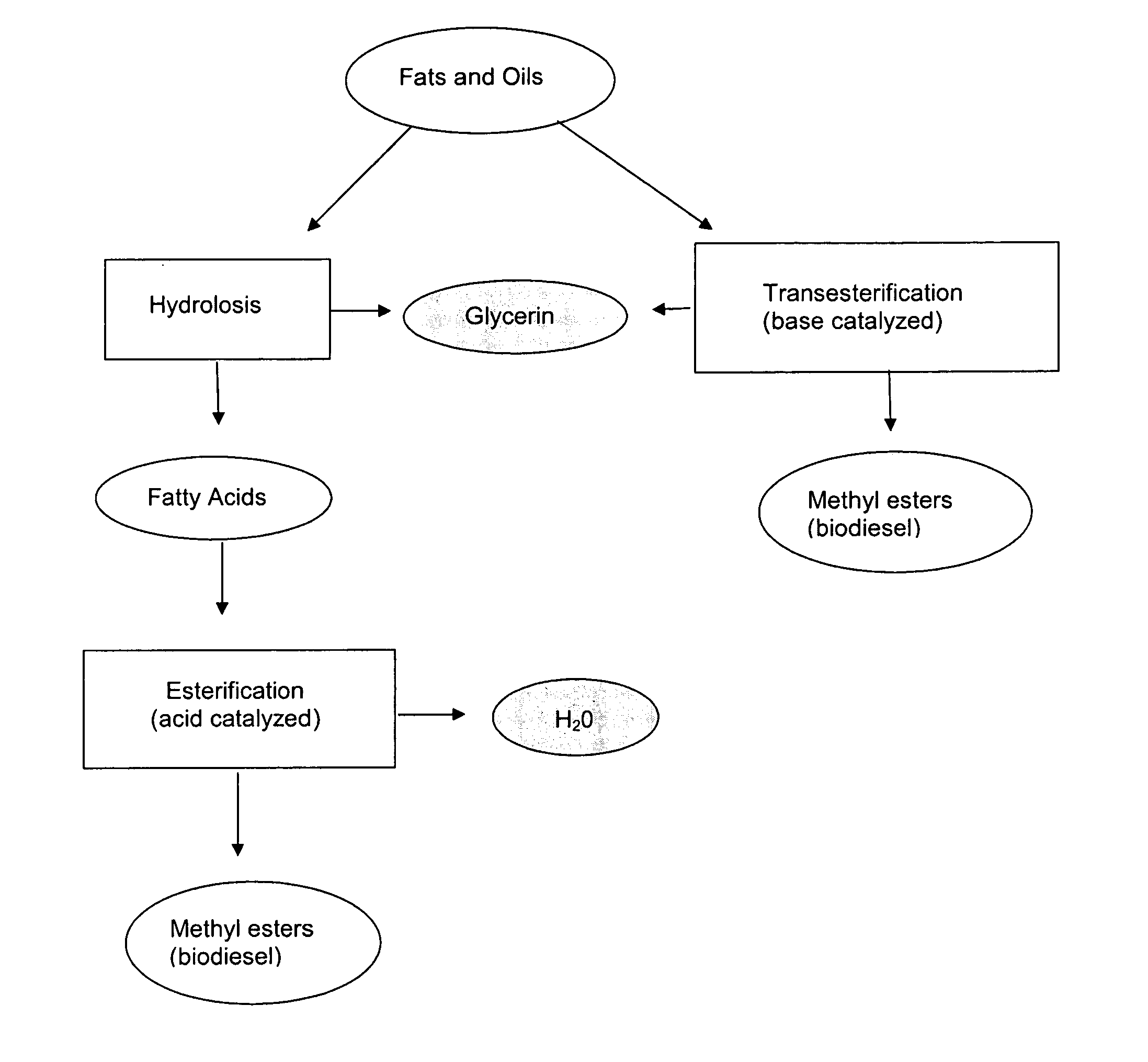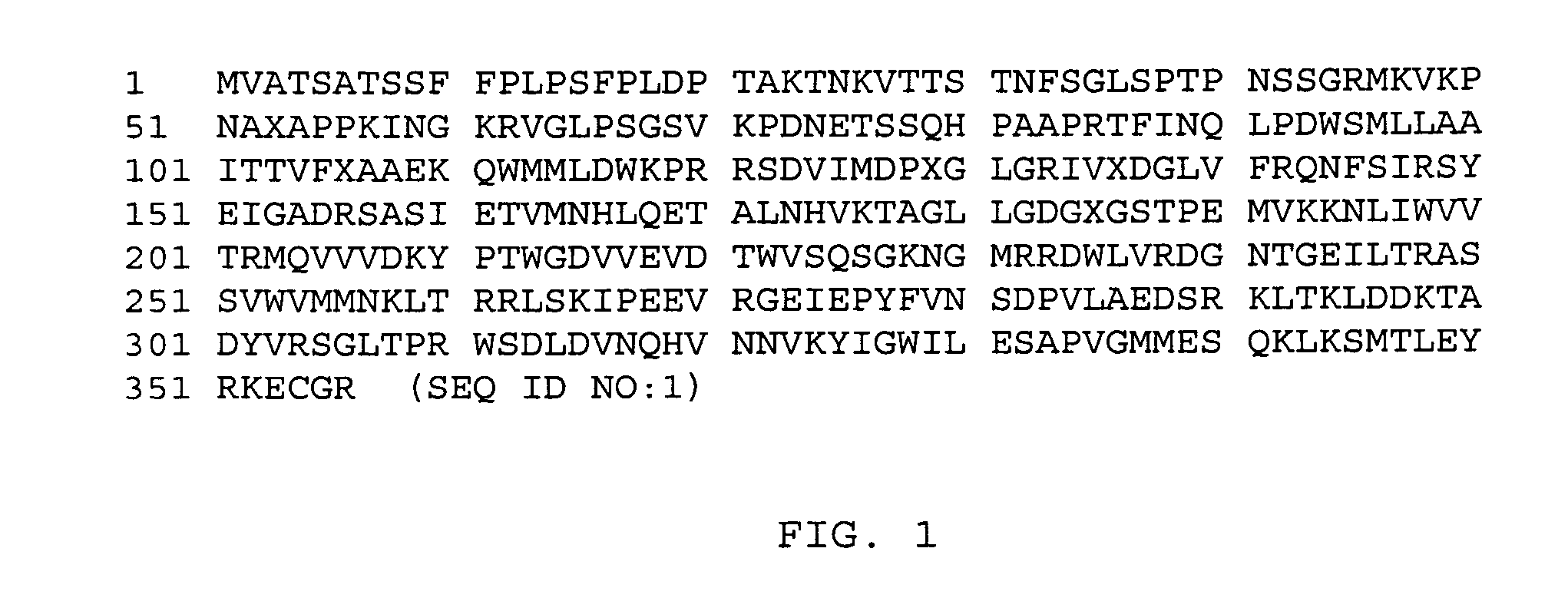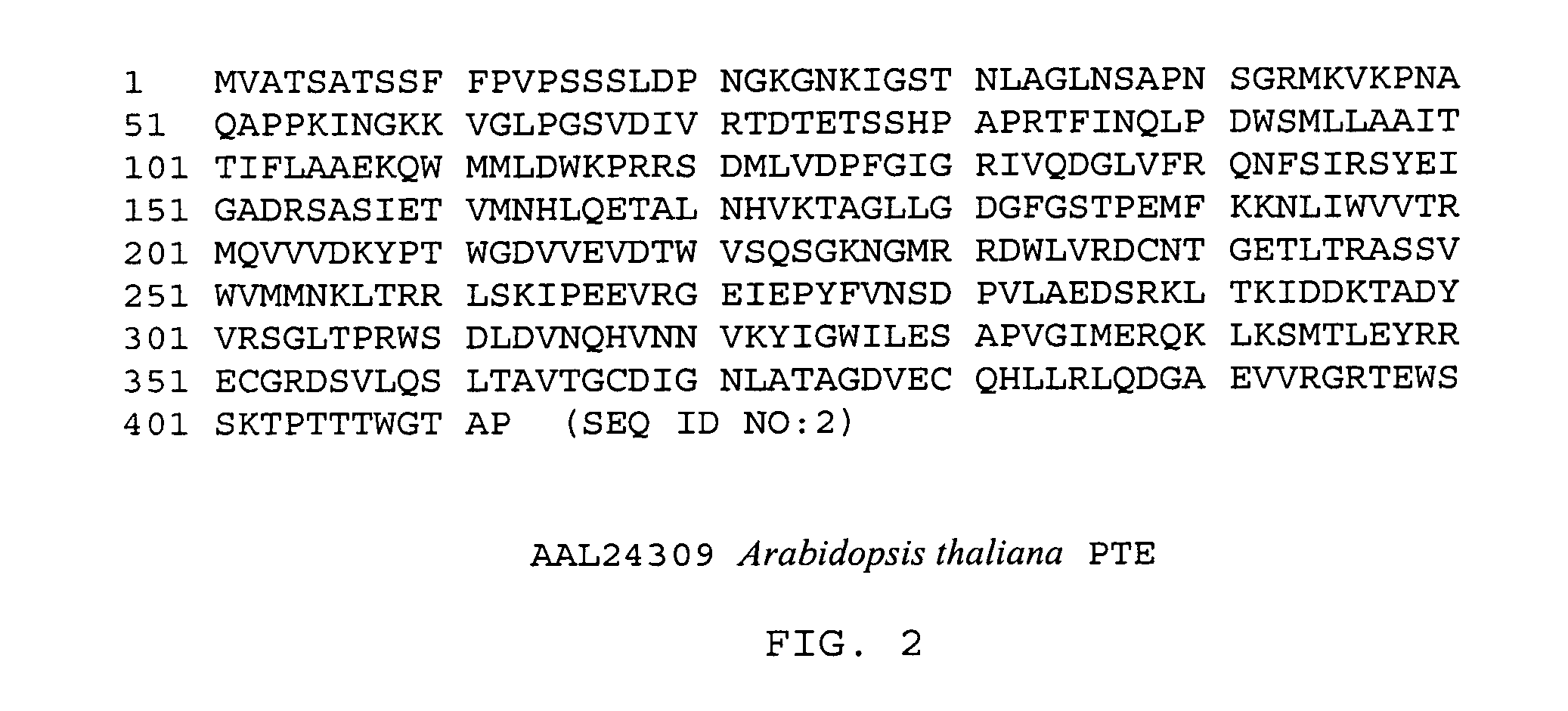Alkylester fatty acid blends and uses therefor
a technology of alkyl fatty acid and blend, which is applied in the oil field, can solve the problems of less beneficial alkyl esters, and achieve the effects of reducing the number of alkyl esters, and reducing the number of beneficial alkyl esters
- Summary
- Abstract
- Description
- Claims
- Application Information
AI Technical Summary
Benefits of technology
Problems solved by technology
Method used
Image
Examples
example 1
Fatty Acid Methyl Ester Blend 1
[0245]A blend of fatty acid methyl esters (“Blend 1”) having the composition of fatty acid methyl esters as set forth in the table below, is prepared by mixing together the fatty acid methyl esters using the volumes presented in the below table to make 100 g of Blend 1.
ComponentBlend 1mL / 100 gcaproic ME (6:0)1%1.1caprylic ME (8:0)2022.8capric ME (10:0)3034.4lauric ME (12:0)2023.0myristic ME (14:0)44.7palmitic ME (16:0)22.3stearic ME (18:0)22.1oleic ME (18:1)1517.1linoleic ME (18:2)11.1linolenic ME (18:3)11.1arachidic ME11.2(20:0)behenic ME (22:0)11.2lignoceric ME11.2(24:0)
[0246]The predicted melting point of Blend 1, PTm, as computed by invention methods, is −41.6° C.
example 2
Fatty Acid Methyl Ester Blend 2
[0247]A blend of fatty acid methyl esters (“Blend 2”) having the composition of fatty acid methyl esters as set forth in the table below, is prepared by mixing together the fatty acid methyl esters using the volumes presented in the above table to make 100 g of Blend 2.
ComponentBlend 2mL / 100 gcaproic ME (6:0)1%1.1caprylic ME (8:0)1011.4capric ME (10:0)3540.1lauric ME (12:0)2528.7myristic ME (14:0)55.8palmitic ME (16:0)22.3stearic ME (18:0)22.1oleic ME (18:1)1517.1linoleic ME (18:2)11.1linolenic ME (18:3)11.1arachidic ME11.2(20:0)behenic ME (22:0)11.2lignoceric ME11.2(24:0)
[0248]The predicted melting point of Blend 2, PTm, as computed by invention methods, is −24.3° C.
example 3
Fatty Acid Methyl Ester Blend 3
[0249]A blend of fatty acid methyl esters (“Blend 3”) having the composition of fatty acid methyl esters as set forth in the table below, is prepared by mixing together the fatty acid methyl esters using the volumes presented in the above table to make 100 g of Blend 3.
ComponentBlend 3ml / 100 gcaproic ME (6:0)11.1caprylic ME (8:0)55.7capric ME (10:0)3540.1lauric ME (12:0)3034.5myristic ME (14:0)55.8palmitic ME (16:0)22.3stearic ME (18:0)22.1oleic ME (18:1)1517.1linoleic ME (18:2)11.1linolenic ME (18:3)11.1arachidic ME11.2(20:0)behenic ME (22:0)11.2lignoceric ME11.2(24:0)
[0250]The predicted melting point of Blend 3, PTm, as computed by invention methods, is −15.0° C.
PUM
| Property | Measurement | Unit |
|---|---|---|
| pour point | aaaaa | aaaaa |
| pour point | aaaaa | aaaaa |
| melting point | aaaaa | aaaaa |
Abstract
Description
Claims
Application Information
 Login to View More
Login to View More - R&D
- Intellectual Property
- Life Sciences
- Materials
- Tech Scout
- Unparalleled Data Quality
- Higher Quality Content
- 60% Fewer Hallucinations
Browse by: Latest US Patents, China's latest patents, Technical Efficacy Thesaurus, Application Domain, Technology Topic, Popular Technical Reports.
© 2025 PatSnap. All rights reserved.Legal|Privacy policy|Modern Slavery Act Transparency Statement|Sitemap|About US| Contact US: help@patsnap.com



